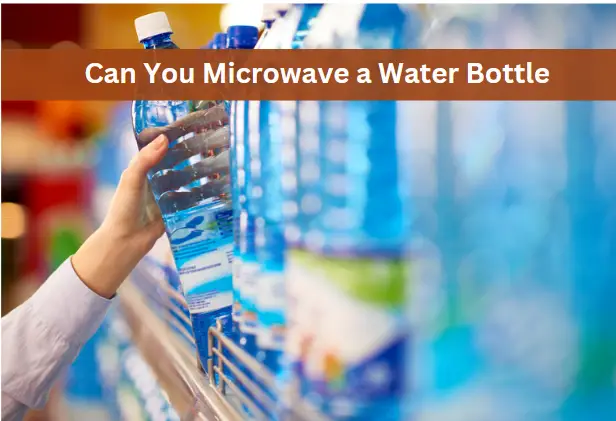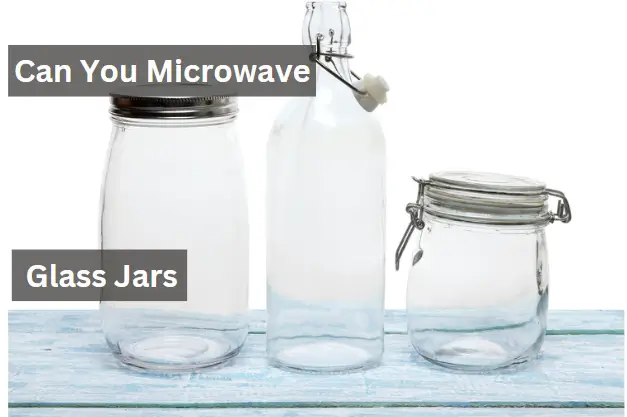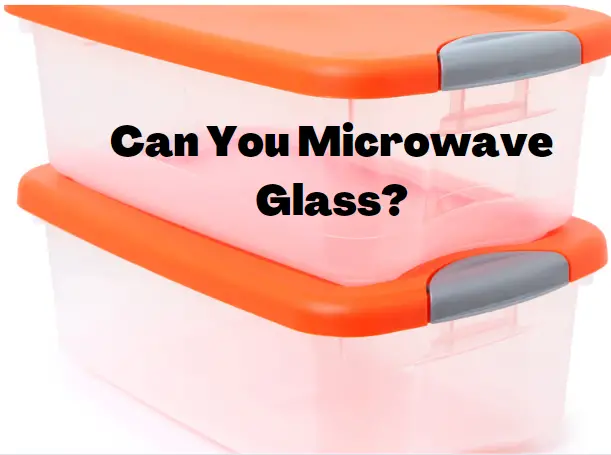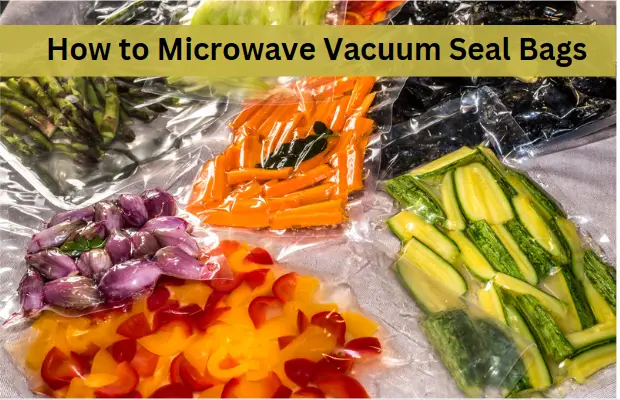Can You Microwave Water Bottles? Safety Tips and Guidelines
Microwaving water bottles is a common practice, especially when people are in a hurry and need to heat up their beverages quickly. However, it is important to know whether it is safe to microwave water bottles or not. The answer is not straightforward, as it depends on various factors such as the type of material the water bottle is made of, its durability, and the instructions provided by the manufacturer.
Most water bottles are made of plastic, and microwaving plastic bottles can be risky as they can release harmful chemicals into the water. Therefore, it is crucial to ensure that the water bottle is made of microwave-safe plastic or other materials that are safe for microwaving. Apart from that, it is important to follow the instructions provided by the manufacturer and avoid overheating the water bottle to prevent any accidents or damage to the bottle.
Can You Microwave Water Bottles?
When in a hurry or on the go, it can be tempting to quickly heat up a water bottle in the microwave. However, it’s important to consider the safety risks before doing so.
Why You Might Want to Microwave a Water Bottle
There are a few reasons why someone might want to microwave a water bottle. One reason is to quickly heat up water for tea or coffee. Another reason is to disinfect a reusable water bottle by using the heat from the microwave to kill bacteria and other unwanted elements.
The Dangers of Microwaving Water Bottles
Microwaving water bottles can be dangerous due to the risk of overheating and the potential release of harmful chemicals. When a water bottle is heated in the microwave, it can become brittle or even melt, causing potential burns or fires. Additionally, some water bottles contain chemicals such as phthalates and polycarbonate that can be harmful if released when heated.
To determine if a water bottle is safe for microwaving, look for a microwave-safe label on the bottle. If the bottle does not have a label, check the recycling number on the bottom of the bottle. Recycling numbers 3, 6, and 7 indicate that the bottle may contain harmful chemicals and should not be microwaved.
What to Do Instead of Microwaving Water Bottles
Instead of microwaving water bottles, there are safer alternatives. For heating up water, consider using a microwave-safe glass or ceramic mug. To disinfect a reusable water bottle, wash it with soap and hot water or run it through the dishwasher.
In conclusion, while it may be tempting to quickly heat up a water bottle in the microwave, it’s important to consider the safety risks and potential release of harmful chemicals. Always check for a microwave-safe label or recycling number before microwaving a water bottle, and consider safer alternatives for heating up water or disinfecting a reusable water bottle.
Microwaving Water Bottles: Why You Might Want to Do It
If you are in a hurry and need to heat up some water fast, microwaving a water bottle might seem like a good idea. It’s quick, simple, and convenient. However, before you try it, there are a few things you should know.
Quick and Simple
Microwaving a water bottle is a quick and simple way to heat up water. All you need to do is fill the bottle with water and put it in the microwave. Make sure that the bottle is made of microwave-safe material and that it is not completely sealed. If the bottle is completely sealed, it can explode in the microwave, causing a mess and potentially injuring you.
Tea or Coffee on the Go
If you are on the go and need to make tea or coffee, microwaving a water bottle can be a convenient option. Simply fill the bottle with water, put it in the microwave, and heat it up. Once the water is hot, pour it into your cup and add your tea or coffee. This can save you time and money, especially if you are traveling or don’t have access to a stove or kettle.
However, it’s important to note that not all water bottles are safe to microwave. Some plastic bottles can release harmful chemicals when heated, which can be dangerous to your health. It’s best to use a water bottle made of microwave-safe material, such as glass or BPA-free plastic.
In summary, microwaving a water bottle can be a quick and convenient way to heat up water for tea or coffee on the go. However, it’s important to make sure that the bottle is made of microwave-safe material and that it is not completely sealed. Always check the manufacturer’s instructions before microwaving a water bottle, and if in doubt, use a different method to heat up your water.
The Dangers of Microwaving Water Bottles
When it comes to microwaving water bottles, there are several risks that you need to be aware of. This section will discuss the dangers of microwaving plastic, metal, and glass water bottles.
Plastic Water Bottles
Plastic water bottles are the most commonly used type of water bottle. However, microwaving plastic bottles can be hazardous, as it may lead to the release of harmful chemicals. The main chemicals to be aware of are BPA and phthalates. These chemicals can leach into your drink when the plastic is rapidly heated in the microwave, the oven, or even by UV rays.
To avoid these risks, it is recommended that you transfer the water into a glass or ceramic container that is safe for microwaves or use an electric kettle. If you must use a plastic water bottle, make sure it is labeled as microwave-safe and heat-resistant. Also, ensure that the plastic is BPA-free and phthalate-free.
Metal Water Bottles
Metal water bottles are durable and reusable, but they are not safe for microwaves. When metal is heated in a microwave, it can cause a fire or damage the microwave. Additionally, the metal can create sparks that can be dangerous.
To avoid these risks, it is recommended that you do not microwave metal water bottles. Instead, transfer the water into a glass or ceramic container that is safe for microwaves or use an electric kettle.
Glass Water Bottles
Glass water bottles are microwave-friendly and safe for microwaves. However, glass bottles can be brittle and break easily, especially when exposed to high temperatures or sudden changes in temperature. When microwaving a glass water bottle, it is important to be cautious and follow the instructions and settings carefully.
To avoid these risks, it is recommended that you use a glass water bottle that is heat resistant and durable. Also, be careful when handling the bottle after microwaving, as it may be hot and can cause burns.
In summary, microwaving water bottles can be dangerous if you do not take the necessary precautions. Plastic water bottles can release harmful chemicals, metal water bottles can cause a fire or damage the microwave, and glass water bottles can be brittle and break easily. It is recommended that you transfer the water into a glass or ceramic container that is safe for microwaves or use an electric kettle to avoid these risks.
What to Do Instead of Microwaving Water Bottles
If you are concerned about the safety risks of microwaving water bottles, there are several alternatives you can use to heat up your water. Here are some options:
Boil Water on the Stovetop
One of the safest ways to heat up your water is by boiling it on the stovetop. This method might take a few minutes longer than microwaving, but it is worth it to avoid the potential risks. Simply fill a pot with water and place it on the stove. Turn the heat to high until the water starts to boil. Once the water is boiling, reduce the heat to a simmer and let it continue to boil for a few minutes. Once the water is hot enough, pour it into a thermos or insulated mug to keep it warm.
Use an Electric Kettle
Another safe alternative to microwaving water bottles is to use an electric kettle. These appliances are designed to quickly and safely heat up water without any risk of contamination or damage to the container. Simply fill the kettle with water, plug it in, and wait for it to heat up. Once the water is hot enough, pour it into a thermos or insulated mug to keep it warm.
Use a Microwave-Safe Glass or Ceramic Container
If you must use a microwave to heat up your water, it is important to use a microwave-safe glass or ceramic container. These materials are less likely to leach harmful chemicals into your water, and they can withstand the heat of the microwave without cracking or breaking. Simply pour your water into the container, place it in the microwave, and heat it up for a few minutes until it is hot enough.
Overall, there are several safe alternatives to microwaving water bottles that you can use to heat up your water. Whether you choose to boil your water on the stovetop, use an electric kettle, or a microwave-safe glass or ceramic container, it is important to prioritize safety and avoid any potential risks to your health.







